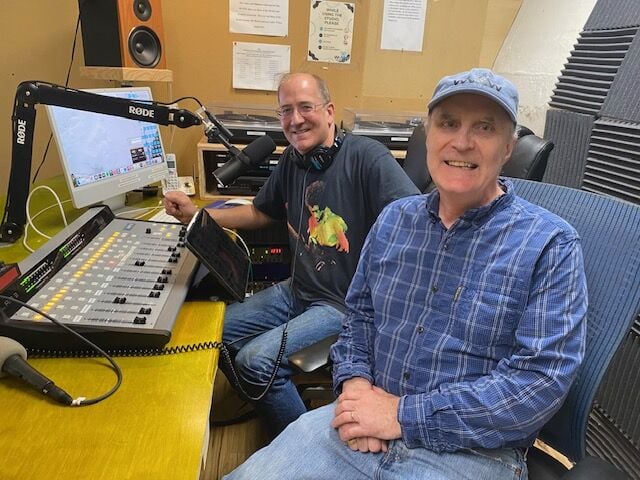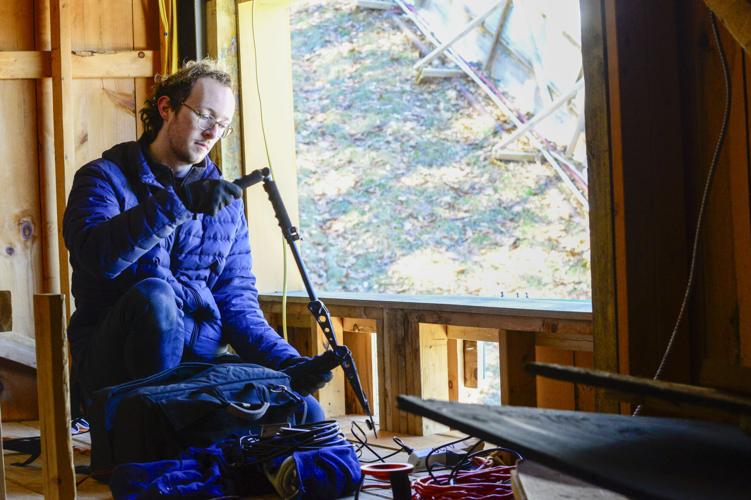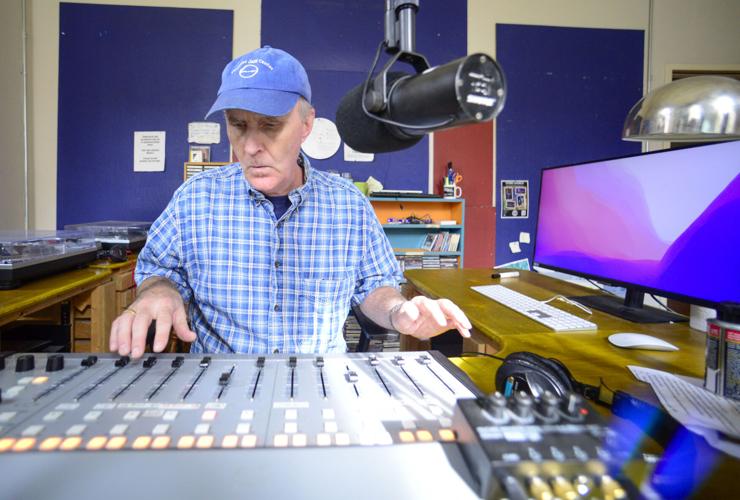MONTPELIER — Community radio stations will be getting a boost to "remain resilient and prepared to serve as lifelines during emergencies while fostering local engagement and preserving Vermont’s unique community fabric," according to a bill passed by the Legislature.
The Vermont Community Radio Grant Program will provide one-time funding for upgrading equipment and infrastructure necessary for reliable emergency broadcasting; procuring and installing backup generators; and enhancing operational sustainability through software improvements and technical training.
"We expect the funding to arrive in the fall," said John Lightfoot, station president of WVEW in Brattleboro.
WVEW's plan is to set up a committee of the board to decide what to request to buy with the money. Lightfoot said he anticipates the list may include a new studio mixing board, uninterruptible power supplies for the studio and transmitter, and backup 5G internet connection for the studio and transmitter. The current mixing board is more than 15 years old.
Lightfoot said WVEW is part of an informal group of 10 community radio stations in Vermont that meet monthly led by Wendy Mays, executive director of the Vermont Association of Broadcasters. Seven of the stations are live, including WVEW and WOOL in Bellows Falls, and three are newly licensed and building out their facilities.
Johnny Gifford, executive director of Brattleboro Community Television, worked with the Vermont Access Network to coordinate with the Vermont Association of Broadcasters for distribution of the funds. Money is expected to flow from the Vermont Department of Public Safety through VAB to the stations.
In an email to community radio stations, Mays said the Legislature committed $150,000 to the grant program.
"[T]his was our first attempt as a group to try to get funding and we succeeded where so many others have not," Mays wrote. "That in and of itself is remarkable!"
About six months ago, Littlefoot showed Gifford a document called "Case for Vermont State Support of Community Radio Stations" put together by Llu Mulvaney-Stanak, station manager of WGDR/WGDH. Gifford said he was "immediately enthralled by the document and could draw so many parallels between the case they were making with the case that community television stations like BCTV were also making."
Already being a DJ and board member for WVEW, Gifford quickly joined the newly formed Vermont community radio group for their monthly meetings and started talking about the work that VAN had done to advocate for state funding of community television. He said the Legislature recognized the groups as "a valuable public service, understood the antiquated funding structure, and wanted to provide support to make up for the higher demand and lower revenue in community television."
"Similarly, the state has now recognized what community radio does as a valuable service and has decided to provide support, but for a slightly different reason," Gifford said. "Vermont is seeing more flooding and other natural disasters arise and so when normal means of communication and travel are restricted due to these disasters, community radio will be better equipped to provide up to date information on how and where to access relief and other resources."
Gifford said the initiative is "a unifier for community radio stations honestly, since we now have a goal; a purpose to use our broadcasting infrastructure to help people through disasters."
"We're already connected to statewide and national emergency alert systems, but our hope with this grant is to focus more energy, effort and capital dollars toward being able to provide to-the-minute, hyperlocal information in the event of emergencies," he said.
Although the grant is a one-time appropriation, Gifford said he expects the groups to continue to advocate for themselves to "better serve all Vermonters."
"This is also the beginning of a growing relationship between community radio and TV, which I hope will continue to grow as our missions are so complementary to one another," he said.
Evan Parks, volunteer and DJ at WOOL, said community radio stations don't currently receive any money to support their mission of providing emergency information to listeners, even though there are many ongoing costs related to that commitment.
"There are several items that we hope to purchase to help make our beloved community radio station more resilient in an emergency," he said.
At the top of list is a replacement for an aging transmitter, which Parks estimates will cost a little more than WOOL will receive from the grant and is nearly equivalent to a whole year's budget for the station. With an antenna and transmitter being very difficult to access in the winter, a remote switching is wanted, so the station can switch between the new and old transmitter, as a backup in the event of a failure for redundancy.
Parks said WOOL also has been installing battery backups for all its critical gear in the studio and up on a mountain, where the transmitter and antenna are located.
"Unfortunately, we have not yet been able to afford to install a backup battery system for our transmitter yet due to the high capacity needed and the high cost of that system, but it is a goal we hope to achieve sometime in the future," he said.
Costs related to WOOL's emergency broadcast, signal and message equipment also are anticipated. Parks said the company that makes the emergency broadcast relay equipment announced it's no longer making a device used widely to automatically receive and disseminate emergency alerts and messages. Not many spare parts are available to fix them anymore.
Parks said the Federal Communications Commission is still evaluating if a software solution can be "robust and secure enough to do the job, or if a new device needs to be designed and built."
"This situation is something that broadcast associations like Vermont's VAB is also trying to find a solution to," he said, "so we may have to purchase a new unit to replace this one, once they become available, as most of these units, like ours are already more than a decade old, and support for these old units will likely be ending sometime in the not so distant future."
Citing past disasters, the COVID-19 pandemic and other emergencies, Parks called community radio "a vital resource in an emergency for sharing important information to our listeners."
"During and after events like ice storms, high winds, heavy snow, and catastrophic flooding, community radio has proven capable of doing the important job of informing the public about local conditions, road closures, food and water distribution, shelters, health and safety information etc.," he said. "When cellular service fails and the power outages are widespread, nearly everyone has a working FM radio, whether in their car, home or workplace, there are even FM tuners in some cellphones and tablet computers."







